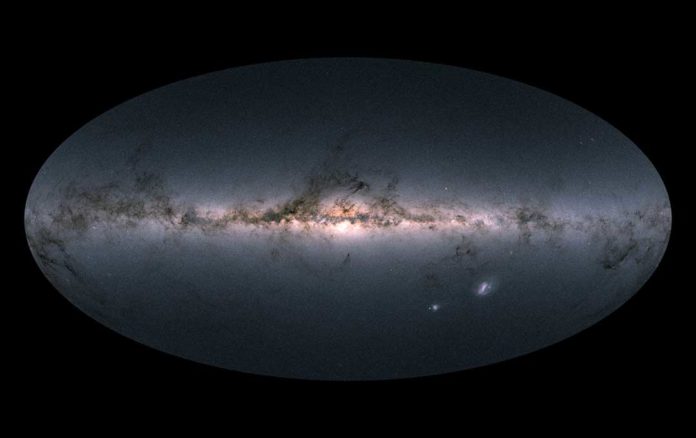In 1871, Lord Kelvin suggested that life could propagate by traveling on meteorites. More than a century later, it was hypothesized that some achondrites were of Martian origin. This theory, known as Panspermia, is based on the idea that microorganisms and the chemical precursors of life are able to survive being transported from one-star system to the next.
Developing this hypothesis, a group of specialists from the Harvard Smithsonian Center for Astrophysics (CfA) directed an investigation that considered whether panspermia could be conceivable on a galactic scale. As per the model they made, they discovered that the whole Milky Way (and even different systems) could be exchanging the components important for life.
Most of the past research into panspermia has focused on whether life could had been distributed through the Solar System or neighboring stars. More specifically, these studies addressed the possibility that life could have been transferred between Mars and Earth (or other Solar bodies) via asteroids or meteorites.
In a new study, scientists observed the Milky Way Galaxy and beyond. The inspiration for this study came from the first-known interstellar visitor to our Solar System – the asteroid ‘Oumuamua’.
Dr. Abraham Loeb – an ITC postdoctoral researcher said, “Following that discovery, Manasvi Lingam and I wrote a paper where we showed that interstellar objects like `Oumuamua could be captured through their gravitational interaction with Jupiter and the Sun.”
“The Solar System acts as a gravitational “fishing net” that contains thousands of bound interstellar objects of this size at any given time. These bound interstellar objects could potentially plant life from another planetary system and in the Solar System. The effectiveness of the fishing net is larger for a binary star system, like the nearby Alpha Centauri A and B, which could capture objects as large as the Earth during their lifetime.”
Idan Ginsburg, a visiting scholar at the CfA’s Institute for Theory and Computation (ITC) said, “We expect most objects to likely be rocky, but in principle, they could also be icy (cometary) in nature. Regardless of whether they are rocky or icy, they can be ejected from their host system and travel potentially thousands of light-years away. In particular, the center of the galaxy can act as a powerful engine to seed the Milky Way.”
For this study, scientists demonstrated an analytic model to ascertain just how likely it is that objects are being traded between star systems on a galactic scale.
Loeb explained, “We calculated how many rocky objects that are ejected from one planetary system can be trapped by another one across the entire Milky Way galaxy. If life can survive for a million years, there could be over a million `Oumuamua-size objects that are captured by another system and can transfer life between stars. Therefore panspermia is not exclusively limited to solar-system sized scales, and the entire Milky Way could potentially be exchanging biotic components across vast distances.”
Ginsburg said, “Our physical model calculated the capture rate of objects in the Milky Way which strongly depend upon velocity and the lifetime of any organisms that may travel on the object. No one had done such a calculation before, and we feel this is quite novel and exciting.”
They found that the likelihood of galactic panspermia came down to a couple of factors. For one, the capture rate of objects launched out from planetary systems is subject to the speed scattering and in addition the extent of the captured object. Second, the likelihood that life could be appropriated starting with one system then onto the next is emphatically reliant upon the survival lifetime of the organisms.
However, in the end they found that even in the worst case scenarios, the entire Milky Way could be exchanging biotic components across vast distances. In short, they determined panspermia is viable on galactic scales, and even between galaxies.
The study also bolsters a possible conclusion raised in two previous studies. In the first study, scientists traced the presence of hypervelocity stars (HVSs) to galactic mergers, which caused them to leave their respective galaxies at semi-relativistic speeds – one-tenth to one-third the speed of light.
In the second study, scientists determined that there are roughly a trillion HVSs in intergalactic space and that hypervelocity stars could bring their planetary systems along with them. These systems would, therefore, be capable of spreading life (which could even take the form of advanced civilizations) from one galaxy to another.
Loeb said, “In principle, life could even be transferred between galaxies, since some stars escape from the Milky Way.”
Scientists expect that the study could have implications for our understanding of life as we know it. Rather than coming to Earth on a meteorite, possibly from Mars or somewhere else in the Solar System, the necessary building blocks for life could have arrived on Earth from another star system (or another galaxy) entirely.
The study, “Galactic Panspermia“, recently appeared online and is being reviewed for publication by the Monthly Notices of the Royal Astronomical Society.
